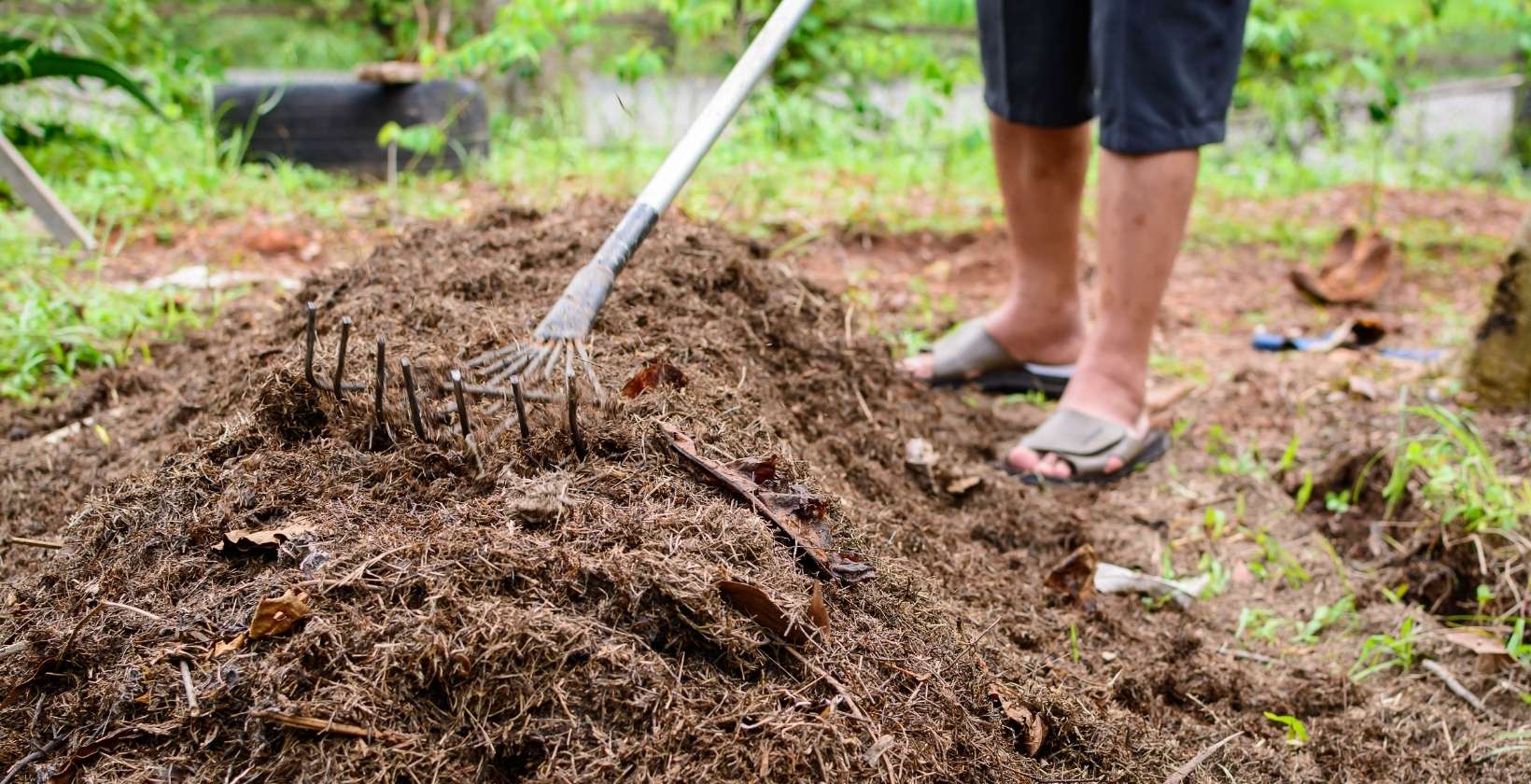
How to Fertilize Soil?
Knowing how to apply fertilizers can help the gardeners create a healthy environment in their yards and allow the smooth growth of the grass and plants. However, how we can do this effectively is a big issue you need to check. In this post, we will be covering the ways of adding fertilizer soil in the yard. Now, let’s begin:
From selecting the right seasonal plants to installing an outdoor kitchen, our landscaping services can do it all for you. Contact us today for a stunning landscape!
Ways of adding fertilizer to soil
If you are yet to test the soil, you can always try the option of adding 2-3 pounds of fertilizer, including 10-20-10 for the 100 Sq ft of the yard area. For a 100 Sq Ft area yard, using 2 pounds of fertilizer will suffice the requirement. However, if you find soil with sand content, it is good to use 2 pounds of fertilizer and for clay-based soil use 3 pounds of fertilizer.
While applying fertilizer to your lawn, avoid going overboard as it can damage your plants or even kill them. If you use a fertilizer with higher nitrogen content, use less fertilizer. Using 2 pounds of 5-10-5 fertilizer will give you a good supply of nitrogen, while using 10-20-10 fertilizer, make sure you use 1 pound of fertilizer.
If you rely on organic fertilizer, including Barnyard manure, you have to spread it over the garden and then work over the soil. You can rely on 20-30 pounds of manure for 100 sq feet of your yard. Avoid excessive use, as it can damage the plants.
If you apply for band or row application, you need to apply the fertilizer in a strip to either side of the row before you start planting. However, while using this method, you must be conscious enough to secure the roots by preventing them from coming in contact with the fertilizer band, as it can kill your plants.
If you deal with transplants in your lawn like pepper, tomato, cabbage or eggplant, you must use the starter solution. For this, you have to mix two tablespoons of a garden fertilizer with one gallon of water. Now, stir them properly, followed by pouring one cup into the hole to allow it to soak before transplanting.
The row or band fertilizer application helps grow plants or even side dressing. It is also helpful in spaces with sandy soil or where the rains have affected the nutrients in the soil. All you need to do is sprinkle the fertilizer over the sides and twitter them. You can confine the half cup of garden fertilizer to satisfy your requirements.
However, the timing and amount of fertilizer vary as per the plants you have in your yard. Make sure you fertilize the fall garden the same way you deal with the spring gardens. A well-fertilized spring garden can help gain the spring fertilizer rates with planting. Explore more about fertilization tools.

Success Tips
A recap comes in the success tips. You need to know the soil’s overall health in your yard before you opt for the venture of fertilization.
- While applying granular fertilizer, brush them away from the leaves to prevent the foliage burn.
- Group the plants on your lawn with similar soil, light and nutritional requirements to make things simple.
- Some fertilizers work fine during warmer days; however, avoid doing the same during extreme conditions. It can add stress to your plants.
How do you choose fertilizer ?
One of the effective fertilizers to choose is a slow-acting granular fertilizer. You must check a few factors before deciding upon the fertilizer, including pH, soil type, drainage, temperature and moisture content. These can have a good impact on the ability of plants and can further help absorb nutrients. To choose the right fertilizer, you must check the following general guidelines. Some of the plants falling under these categories will have different requirements.
- It is always good for gardeners to use a complete fertilizer with thrice content, including nitrogen, phosphorus or potassium. The best bet to try in your yard includes 10-20-10 or 12-24-12. You can easily find these fertilizers.
- Some soil types carry ample potassium for adequate plant growth, so they do not need more. However, adding slightly higher potassium content will not damage any plant. It is advisable to use a complete fertilizer.
- Avoid using the lawn fertilizer on your lawn. Some carry excessive amounts of nitrogen, while others can have chemicals for weed control, they can injure or kill too many vegetables.
- Soils having pH levels close to 5.7 would need lime. Adding lime can give calcium content to your soil, making it less acidic, thus increasing the pH levels to gain an acceptable level.

Nutrients required by the grass and plants in your yard
If you look at the nutrients the grass and plants in your yard need, these are three essential nutrients – NPK or Nitrogen (N), Phosphorus (P) and Potassium (K), to be precise. These three nutrients play an important role in making the soil healthy and allowing quick and smooth growth of plants and grass on your lawn. You must maintain the N-P-K ratio in the correct proportion to the desired results.
Nitrogen plays a vital role in giving good leaf growth. It airs in the healthy growth of chlorophyll, an important pigment that helps plants convert sunlight into food. However, excessive amounts of nitrogen will add higher levels of foliage and fewer fruit or flowers. On the other hand, insufficient nitrogen can give yellow leaves, thus hampering the growth of fruits or flowers in plants.
For healthy root and stem development, phosphorus is added. It helps gain good fruit and flower production, while its shortage can allow the leaf drop issue. The other problem you face in your lawn with less phosphorus supply is weaker flower buds and stems, which fail to open.
Lastly, Potassium (also known as Potash) is an overall nutrient used by the grass and plants. It helps them use their photosynthate, which further helps quicker recovery from disease, or insect damage or some weather extremes. However, reducing Potassium can bring in yellow leaf margins, poorly developed buds and weaker flower stems.
Besides the three, the plants and grasses in your lawn also need other nutrients from the three. These include the micronutrients and trace minerals in small quantities that contain sulfur, magnesium, iron, copper, zinc, manganese, and magnesium.
Why Do Plants Require fertilizers?
The answer is simple, not all plants in your yard have the potential to consume nutrients value from the soil or air. However, adding too much fertilizer can only damage and kill the plant. So, before applying any fertilizer, it is always a good idea to treat your soil by choosing the right formula and type per your plants’ requirements. In return, you can find the plants rewarding you with bigger and more beautiful flowers in your yard.
Test Your Soil
Testing your soil will help you determine the number of various nutrients present in your soil. It will also tell you the story about the presence of organic matter, which indicates the availability of nitrogen that comes as an organic matter that further breaks down. You need to know all these things before you start fertilizing your lawn. The following are the steps to collect a soil sample:
- Using a spade, you have to clean the pail.
- Now, push your spade deep into the soil to get the sample.
- Throw your spade with a good amount of soil.
- Make sure you cut half to one-inch soil slices from the back of the hole using a spade.
- Make sure you insert the spade 7 inches deep, going fine and with proper width. Now, place this sample over the place.
- Make sure you reap this process 5-6 times, getting soil samples from different spots of your yard.
- Once you collect them, thoroughly mix them over the pail.
- Once you mix it, send it to the lab for the test. It takes a week or so to get the report for your soil test.
In conclusion, fertilization effectively gives life to the plants and grass on your lawn. So, if you plan to go with a fertilization schedule, you are all set to provide a new life to your yard. The above points discussed in the post will help you carry out this task, or you can even seek professional help for better results.
From selecting the right seasonal plants to installing an outdoor kitchen, our landscaping services can do it all for you. Contact us today for a stunning landscape!

